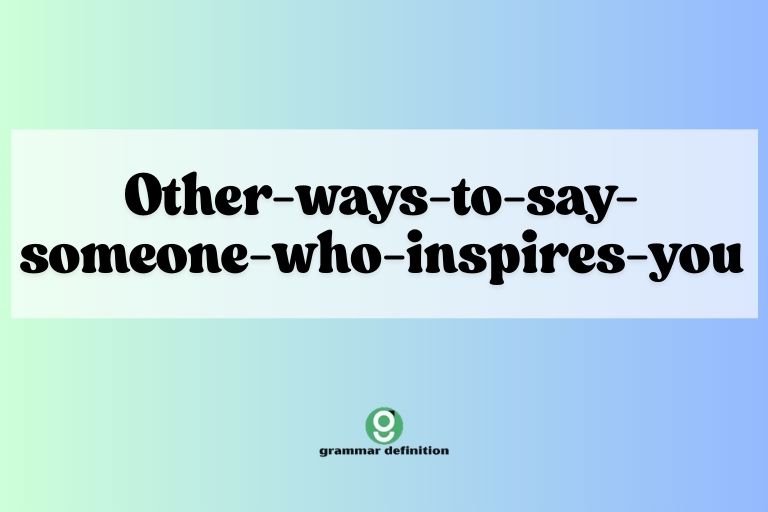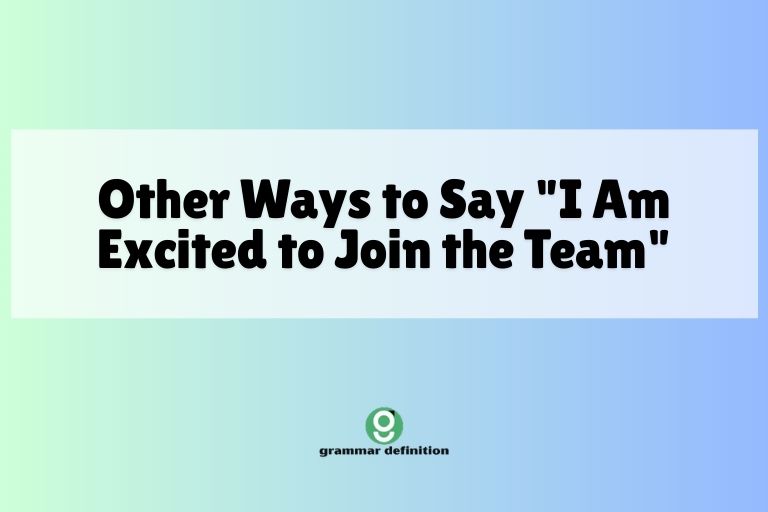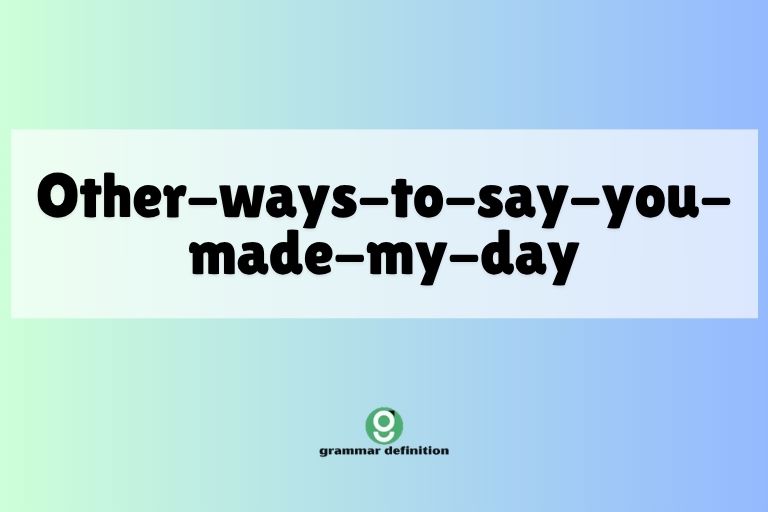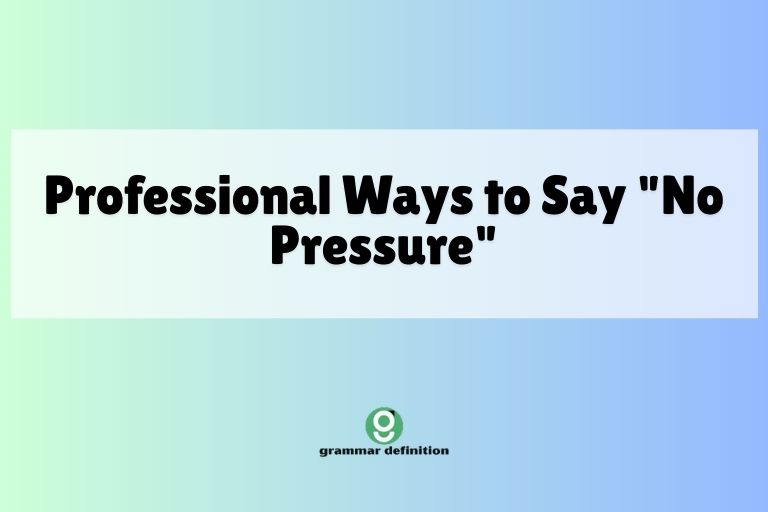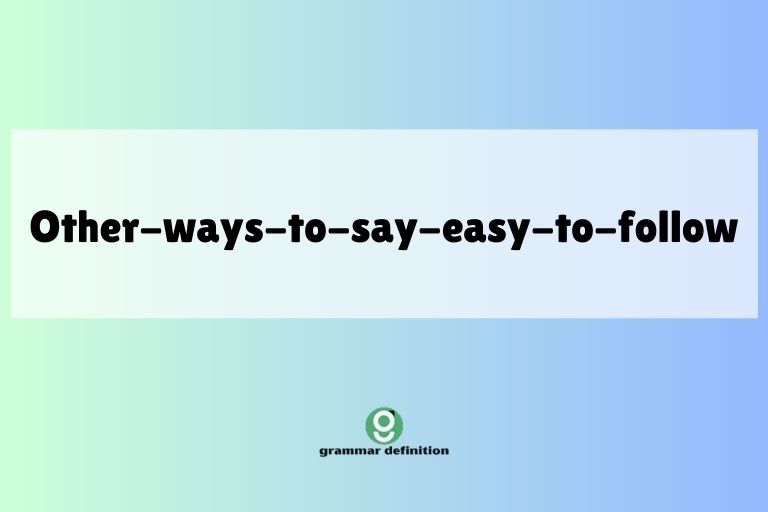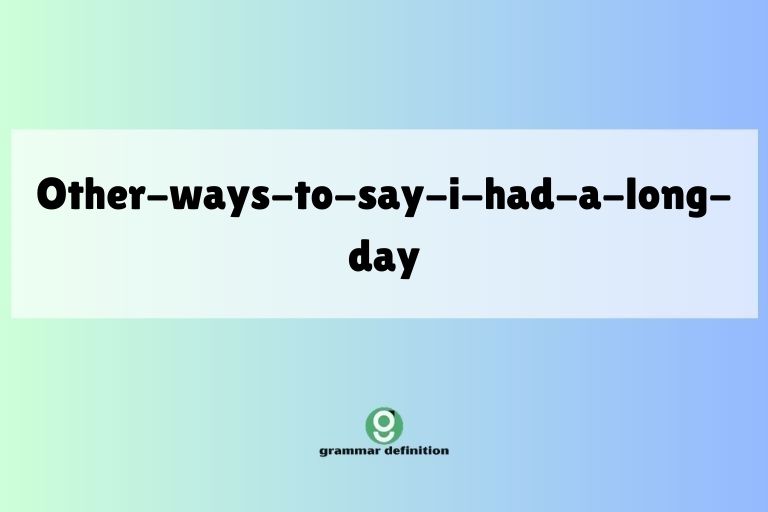Beyond ‘On the Other Hand’: Diverse Ways to Express Contrast
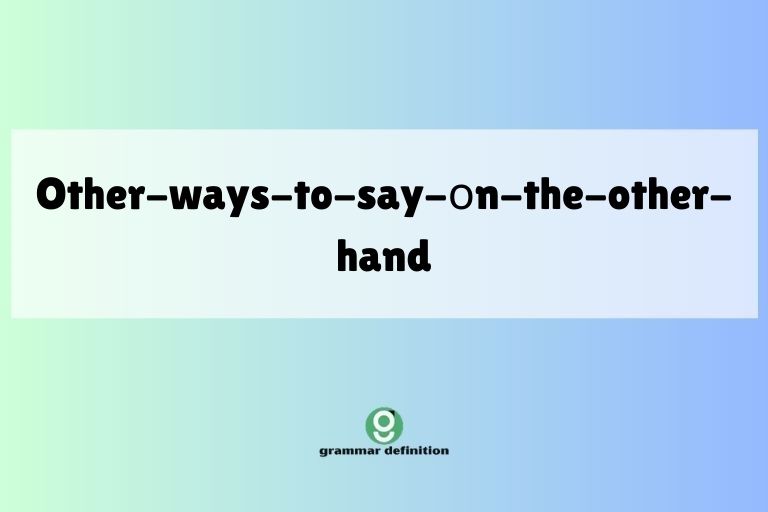
Expressing contrasting ideas is a fundamental aspect of effective communication. While “on the other hand” is a common phrase used to introduce opposing viewpoints, relying solely on it can make your writing and speech sound repetitive.
This article explores a wide range of alternative expressions that can add nuance, sophistication, and clarity to your contrasting statements. By mastering these phrases, you can elevate your English proficiency and communicate your ideas with greater precision and impact.
This guide is beneficial for English language learners of all levels, writers, students, and anyone wanting to enhance their communication skills.
This article will delve into various ways to express contrast, providing definitions, examples, and practical exercises to help you confidently use these alternatives in your daily communication. We’ll cover everything from simple conjunctions to more complex phrases, ensuring you have a comprehensive understanding of how to effectively convey contrasting ideas.
Table of Contents
- Introduction
- Definition: Expressing Contrast
- Structural Breakdown
- Types and Categories of Contrast Expressions
- Examples
- Usage Rules
- Common Mistakes
- Practice Exercises
- Advanced Topics
- FAQ
- Conclusion
Definition: Expressing Contrast
Expressing contrast involves highlighting the differences or oppositions between two or more ideas, facts, or situations. It’s a crucial element in argumentation, analysis, and descriptive writing, allowing you to present a balanced view, showcase different perspectives, or emphasize the unique qualities of various subjects.
Contrast can be expressed through various grammatical structures, including conjunctions, adverbs, prepositional phrases, and transitional phrases. The overall function is to show the reader that there is a shift in perspective, a difference in opinion, or opposing information being presented.
Contrast helps the reader understand the nuances of a topic, fostering a deeper comprehension of the subject matter. By clearly articulating opposing viewpoints, you can create a more compelling and persuasive argument.
Furthermore, understanding and using various contrast expressions demonstrates a strong command of the English language and enhances your overall communication skills.
Structural Breakdown
The structure used to express contrast varies depending on the type of expression employed. Here’s a breakdown of common structures:
- Conjunctions: Conjunctions like but, yet, while, and whereas connect two clauses or phrases that present contrasting ideas. The structure is generally: Clause 1 + Conjunction + Clause 2. For example: “She likes coffee, but he prefers tea.”
- Adverbs: Adverbs such as however, nevertheless, conversely, and still often introduce a contrasting statement. They can appear at the beginning, middle, or end of a sentence. For example: “The economy is improving. However, unemployment remains high.”
- Prepositional Phrases: Phrases like in contrast to, contrary to, and despite are used to show opposition. The structure is usually: Prepositional Phrase + Noun/Gerund + Clause. For example: “In contrast to last year, this year’s profits are significantly lower.”
- Transitional Phrases: Transitional phrases like on the other hand, in opposition, and by contrast connect two sentences or paragraphs, indicating a change in direction or a conflicting viewpoint. For example: “The first proposal was well-received. On the other hand, the second proposal faced considerable criticism.”
- Subordinate Clauses: Subordinate clauses beginning with words like *although, though, even though, while*, and *whereas* introduce a contrasting idea that is dependent on the main clause. The structure is usually: Subordinate Clause + Comma + Main Clause or Main Clause + Subordinating Conjunction + Subordinate Clause. For Example: “Although it was raining, they decided to go for a walk.”
Understanding these structural elements is crucial for using contrast expressions correctly and effectively. By paying attention to sentence structure and grammatical rules, you can ensure that your contrasting statements are clear, concise, and impactful.
Types and Categories of Contrast Expressions
Contrast expressions can be categorized based on their grammatical function and the way they connect contrasting ideas. Here’s a breakdown of the main categories:
Conjunctions
Conjunctions are words that connect words, phrases, or clauses. Contrast conjunctions specifically indicate a difference or opposition between the elements they connect. Common contrast conjunctions include: but, yet, while, and whereas.
Adverbs
Adverbs modify verbs, adjectives, or other adverbs, providing additional information about them. Contrast adverbs introduce a contrasting element or statement. Common contrast adverbs include: however, nevertheless, conversely, still, and instead.
Prepositional Phrases
Prepositional phrases consist of a preposition and its object (a noun or pronoun). Contrast prepositional phrases express opposition or difference. Common contrast prepositional phrases include: in contrast to, contrary to, despite, and in spite of.
Transitional Phrases
Transitional phrases connect ideas between sentences or paragraphs, signaling a shift in thought or direction. Contrast transitional phrases specifically indicate a contrasting idea. Common contrast transitional phrases include: on the other hand, in contrast, conversely, by contrast, and on the contrary.
Subordinate Clauses
Subordinate clauses are dependent clauses that cannot stand alone as a sentence and begin with a subordinating conjunction. Subordinate clauses of contrast introduce an idea that contrasts with the main clause. Common conjunctions that introduce clauses of contrast are: although, though, even though, while, and whereas.
Examples
The following sections provide extensive examples of each type of contrast expression, illustrating their usage in various contexts.
Conjunctions Examples
Conjunctions are a simple yet effective way to show contrast within a sentence. The table below provides multiple examples using common contrast conjunctions.
| Conjunction | Example Sentence |
|---|---|
| But | She wanted to go to the beach, but it started raining. |
| But | He studied hard, but he still didn’t pass the exam. |
| But | The car is old, but it still runs well. |
| But | I like coffee, but I prefer tea. |
| But | They promised to come, but they never showed up. |
| Yet | He is intelligent, yet he lacks common sense. |
| Yet | The task was difficult, yet she managed to complete it. |
| Yet | She was tired, yet she continued working. |
| Yet | The evidence was weak, yet the jury convicted him. |
| Yet | He apologized, yet she remained angry. |
| While | He enjoys playing soccer, while she prefers basketball. |
| While | Some people prefer summer, while others prefer winter. |
| While | The city is busy, while the countryside is peaceful. |
| While | She is talkative, while he is quiet. |
| While | He is optimistic, while she is pessimistic. |
| Whereas | He is tall, whereas she is short. |
| Whereas | Some people like spicy food, whereas others prefer bland dishes. |
| Whereas | The north of the country is industrial, whereas the south is agricultural. |
| Whereas | She is very organized, whereas he is quite disorganized. |
| Whereas | The old system was inefficient, whereas the new system is much more streamlined. |
| But | The movie was long, but entertaining. |
| Yet | The problem seemed impossible, yet they found a solution. |
| While | Cats are independent, while dogs are more dependent. |
| Whereas | Apples are sweet, whereas lemons are sour. |
Adverbs Examples
Adverbs offer a more flexible way to introduce contrast, often appearing at different positions within a sentence. The table below showcases how various adverbs can be used to express contrasting ideas.
| Adverb | Example Sentence |
|---|---|
| However | The plan seemed perfect; however, it failed in practice. |
| However | She studied hard; however, she didn’t get the job. |
| However | The weather was beautiful; however, we had to stay inside. |
| However | The food was delicious; however, the service was slow. |
| However | He promised to help; however, he never did. |
| Nevertheless | The task was difficult; nevertheless, they persevered. |
| Nevertheless | The odds were against them; nevertheless, they won. |
| Nevertheless | The evidence was circumstantial; nevertheless, he was convicted. |
| Nevertheless | The journey was long; nevertheless, it was rewarding. |
| Nevertheless | The team was exhausted; nevertheless, they continued to fight. |
| Conversely | Some people enjoy working in teams; conversely, others prefer working alone. |
| Conversely | The economy is booming; conversely, some sectors are struggling. |
| Conversely | He is very outgoing; conversely, his brother is quite shy. |
| Conversely | The demand is increasing; conversely, the supply is decreasing. |
| Conversely | The population is aging; conversely, the birth rate is declining. |
| Still | It was raining; still, they went for a walk. |
| Still | He was tired; still, he finished the work. |
| Still | She was angry; still, she tried to be polite. |
| Still | The car was old; still, it ran well. |
| Still | The task was challenging; still, they completed it successfully. |
| Instead | They didn’t go to the park; instead, they stayed home and watched a movie. |
| Instead | She didn’t buy a new car; instead, she repaired her old one. |
| Instead | He didn’t order pizza; instead, he made a salad. |
| Instead | We didn’t fly; instead, we took the train. |
Prepositional Phrases Examples
Prepositional phrases add a layer of sophistication to expressing contrast. Here are examples of how to use them effectively.
| Prepositional Phrase | Example Sentence |
|---|---|
| In contrast to | In contrast to last year, this year’s sales are much higher. |
| In contrast to | In contrast to his brother, he is very hardworking. |
| In contrast to | In contrast to the original plan, we decided to take a different approach. |
| In contrast to | In contrast to the city, the countryside is very peaceful. |
| In contrast to | In contrast to expectations, the project was completed ahead of schedule. |
| Contrary to | Contrary to popular belief, exercise is not always the best way to lose weight. |
| Contrary to | Contrary to the rumors, they are not getting divorced. |
| Contrary to | Contrary to what he said, she did not agree with the plan. |
| Contrary to | Contrary to expectations, the weather was beautiful. |
| Contrary to | Contrary to the evidence, the jury found him guilty. |
| Despite | Despite the rain, they went for a walk. |
| Despite | Despite his efforts, he failed the exam. |
| Despite | Despite the difficulties, they completed the project. |
| Despite | Despite the cold weather, the flowers bloomed. |
| Despite | Despite the warnings, he took the risk. |
| In spite of | In spite of the high cost, they bought the house. |
| In spite of | In spite of her age, she is very active. |
| In spite of | In spite of the traffic, they arrived on time. |
| In spite of | In spite of the noise, she slept soundly. |
| In spite of | In spite of his fear, he gave the presentation. |
| Regardless of | Regardless of the weather, the event will proceed as planned. |
| Regardless of | Regardless of the cost, we need to fix the problem. |
| Regardless of | Regardless of the consequences, he made his decision. |
| Regardless of | Regardless of her background, she succeeded in her career. |
Transitional Phrases Examples
Transitional phrases are excellent for connecting contrasting ideas between sentences or paragraphs, creating a smooth flow of thought. The table below offers various examples of how to use transitional phrases to express contrast.
| Transitional Phrase | Example Sentence |
|---|---|
| On the other hand | The first proposal was well-received. On the other hand, the second proposal faced considerable criticism. |
| On the other hand | Some people prefer working in an office. On the other hand, others prefer working from home. |
| On the other hand | The city offers many opportunities. On the other hand, it can be very expensive. |
| On the other hand | He is very good at math. On the other hand, he struggles with writing. |
| On the other hand | She is very organized. On the other hand, he is quite disorganized. |
| In contrast | The first painting is vibrant and colorful. In contrast, the second is muted and somber. |
| In contrast | The economy was booming last year. In contrast, it is now facing a recession. |
| In contrast | The old system was inefficient. In contrast, the new system is much more streamlined. |
| In contrast | Some students learn quickly. In contrast, others require more time. |
| In contrast | The summer was hot and dry. In contrast, the autumn has been cool and wet. |
| Conversely | Some people are extroverted and enjoy socializing. Conversely, others are introverted and prefer solitude. |
| Conversely | The company’s profits increased in the first quarter. Conversely, they declined in the second quarter. |
| Conversely | The population is aging in many developed countries. Conversely, it is growing rapidly in some developing countries. |
| Conversely | Some people prefer traditional medicine. Conversely, others prefer alternative therapies. |
| Conversely | The demand for oil is decreasing. Conversely, the demand for renewable energy is increasing. |
| By contrast | The first half of the game was slow and uneventful. By contrast, the second half was full of action. |
| By contrast | The old building was dilapidated and abandoned. By contrast, the new building is modern and well-maintained. |
| By contrast | The first speaker was boring and uninspiring. By contrast, the second speaker was engaging and informative. |
| By contrast | The cost of living is high in the city. By contrast, it is much lower in the countryside. |
| By contrast | The climate is hot and humid in the tropics. By contrast, it is cold and dry in the arctic. |
| On the contrary | He doesn’t hate his job; on the contrary, he enjoys it very much. |
| On the contrary | They are not losing money; on the contrary, they are making a significant profit. |
| On the contrary | She is not lazy; on the contrary, she is extremely hardworking. |
| On the contrary | The situation is not hopeless; on the contrary, there is still a chance for success. |
Subordinate Clauses Examples
Subordinate clauses are excellent for building complex sentences and expressing contrast in a nuanced way. Here are examples of how to use them effectively.
| Subordinating Conjunction | Example Sentence |
|---|---|
| Although | Although it was raining, they decided to go for a walk. |
| Although | Although he was tired, he continued working. |
| Although | Although she studied hard, she didn’t pass the exam. |
| Although | Although the food was delicious, the service was slow. |
| Although | Although the car was old, it still ran well. |
| Though | Though he is rich, he is not happy. |
| Though | Though she is young, she is very wise. |
| Though | Though the task was difficult, they completed it successfully. |
| Though | Though the weather was bad, they enjoyed their vacation. |
| Though | Though he apologized, she remained angry. |
| Even though | Even though he was warned, he took the risk. |
| Even though | Even though she didn’t want to go, she went anyway. |
| Even though | Even though the room was small, it felt cozy. |
| Even though | Even though he had little experience, he got the job. |
| Even though | Even though she was nervous, she gave a great presentation. |
| While | While some people prefer summer, others prefer winter. |
| While | While he is talkative, she is quiet. |
| While | While the city is busy, the countryside is peaceful. |
| While | While one group supports the proposal, another group opposes it. |
| While | While he is optimistic, she is pessimistic. |
| Whereas | Whereas apples are sweet, lemons are sour. |
| Whereas | Whereas cats are independent, dogs are more dependent. |
| Whereas | Whereas some people enjoy social media, others find it overwhelming. |
| Whereas | Whereas the north is industrial, the south is agricultural. |
Usage Rules
Using contrast expressions correctly requires attention to specific grammatical rules. Here are some key guidelines:
- Conjunctions: Ensure that the clauses connected by conjunctions have parallel structures. For example, “She likes to read books, but he prefers watching movies.” (Both clauses have a similar structure: subject + verb + object).
- Adverbs: Place adverbs strategically for maximum impact. “However” and “nevertheless” often begin a sentence or clause, while “still” can be placed mid-sentence. “The team played well; however, they lost the game.”
- Prepositional Phrases: Use prepositional phrases with a noun or gerund. “Despite the rain, the event continued.” (Rain is a noun). “In spite of feeling tired, she went to the gym.” (Feeling is a gerund).
- Transitional Phrases: Use a comma after a transitional phrase when it begins a sentence. “On the other hand, this approach is more cost-effective.”
- Subordinate Clauses: When the subordinate clause comes before the main clause, a comma is usually needed to separate the two clauses. “Although it was raining, they decided to go for a walk.” If the main clause comes first, the comma is usually omitted. “They decided to go for a walk although it was raining.”
Important Note: The choice of contrast expression depends on the specific context and the desired emphasis. Consider the relationship between the ideas you are contrasting and select the expression that best conveys that relationship.
Common Mistakes
Learners often make predictable errors when using contrast expressions. Here are some common mistakes and how to avoid them:
| Incorrect | Correct | Explanation |
|---|---|---|
| Despite of the rain, we went out. | Despite the rain, we went out. | “Despite” does not require “of.” |
| Although he is tired, but he finished the work. | Although he is tired, he finished the work. OR He is tired, but he finished the work. | Do not use “but” after “although.” They both indicate contrast and are redundant together. |
| However, I like coffee, but he likes tea. | However, I like coffee; he likes tea. OR I like coffee, but he likes tea. | “However” and “but” should not be used together in the same clause. |
| In contrast of the old system, the new system is better. | In contrast to the old system, the new system is better. | The correct preposition is “to,” not “of.” |
| While he is rich, but he is unhappy. | While he is rich, he is unhappy. OR He is rich, but he is unhappy. | Do not use “but” after “while” when “while” is used as a subordinating conjunction of contrast. |
By being aware of these common mistakes, you can avoid errors and improve the accuracy of your writing and speech.
Practice Exercises
Test your understanding of contrast expressions with the following exercises.
Exercise 1: Fill in the Blanks
Complete the following sentences using appropriate contrast expressions (e.g., but, however, in contrast to, although).
| Question | Answer |
|---|---|
| 1. She wanted to go to the party, _______ she was feeling unwell. | 1. but / although |
| 2. _______ the rain, they decided to have a picnic. | 2. Despite / In spite of |
| 3. He is very intelligent; _______, he lacks common sense. | 3. however / nevertheless |
| 4. _______ I enjoy coffee, I prefer tea. | 4. While |
| 5. _______ the old system, the new system is much more efficient. | 5. In contrast to |
| 6. _______ the fact that he was tired, he continued working. | 6. Despite / In spite of |
| 7. Some people prefer summer, _______ others prefer winter. | 7. whereas |
| 8. She didn’t study; _______, she passed the exam. | 8. nevertheless / however |
| 9. _______ he apologized, she remained angry. | 9. Although / Though / Even though |
| 10. The movie was long, _______ entertaining. | 10. but |
Exercise 2: Sentence Combining
Combine the following pairs of sentences using contrast expressions.
| Question | Answer |
|---|---|
| 1. She is rich. She is unhappy. (Use: but) | 1. She is rich, but she is unhappy. |
| 2. It was raining. They went for a walk. (Use: despite) | 2. Despite the rain, they went for a walk. |
| 3. He is intelligent. He is lazy. (Use: however) | 3. He is intelligent; however, he is lazy. |
| 4. Some people like cats. Others like dogs. (Use: whereas) | 4. Some people like cats, whereas others like dogs. |
| 5. The task was difficult. They completed it. (Use: although) | 5. Although the task was difficult, they completed it. |
| 6. He was warned. He took the risk. (Use: even though) | 6. Even though he was warned, he took the risk. |
| 7. The food was delicious. The service was slow. (Use: but) | 7. The food was delicious, but the service was slow. |
| 8. She is very organized. He is disorganized. (Use: while) | 8. While she is very organized, he is disorganized. |
| 9. The old system was inefficient. The new system is efficient. (Use: in contrast to) | 9. In contrast to the old system, the new system is efficient. |
| 10. He apologized. She remained angry. (Use: yet) | 10. He apologized, yet she remained angry. |
Exercise 3: Error Correction
Identify and correct the errors in the following sentences.
| Question | Answer |
|---|---|
| 1. Despite of the cold weather, we went swimming. | 1. Despite the cold weather, we went swimming. |
| 2. Although he is tired, but he finished the work. | 2. Although he is tired, he finished the work. OR He is tired, but he finished the work. |
| 3. However, I like coffee, but he likes tea. | 3. However, I like coffee; he likes tea. OR I like coffee, but he likes tea. |
| 4. In contrast of the old system, the new system is better. | 4. In contrast to the old system, the new system is better. |
| 5. While he is rich, but he is unhappy. | 5. While he is rich, he is unhappy. OR He is rich, but he is unhappy. |
Advanced Topics
For advanced learners, exploring more subtle nuances of contrast can further enhance their writing and speaking skills. This includes understanding implied contrast, where the opposition is not explicitly stated but is inferred from the context.
For example, consider the sentence: “She always wears bright colors.” This implies a contrast with someone who might wear more subdued or neutral tones, even if that person isn’t directly mentioned.
Another advanced technique is using rhetorical questions to highlight contrast. For instance, “He claims to be an expert, but has he ever actually done the work?” This question emphasizes the contrast between his claim and his actual experience.
Mastering these subtle forms of contrast can add depth and sophistication to your communication.
Furthermore, exploring contrast within different genres, such as literature, academic writing, and business communication, can reveal how contrast is used strategically to achieve specific effects. In literature, contrast can create tension and highlight character development.
In academic writing, it can present a balanced argument and acknowledge opposing viewpoints. In business communication, it can differentiate products or services from competitors.
FAQ
- What’s the difference between “but” and “however”?
“But” is a conjunction used to connect two clauses within a sentence, while “however” is an adverb that typically introduces a new sentence or clause. “But” is more informal and direct, while “however” is more formal and often used to signal a stronger contrast.
- When should I use “in contrast to” versus “despite”?
“In contrast to” is used to highlight the differences between two things, while “despite” is used to indicate that something happened or is true even though there was a reason
preventing it. “In contrast to” is used to compare distinct characteristics, whereas “despite” acknowledges a hindrance that does not impede the outcome.
- How can I avoid overusing “on the other hand”?
Vary your vocabulary by using alternatives such as “conversely,” “in contrast,” “by contrast,” or “on the contrary.” Additionally, consider rephrasing your sentences to use conjunctions like “but,” “while,” or “whereas” to express contrast more subtly.
- Is it always necessary to use a comma after contrast adverbs like “however”?
When “however” begins a sentence or independent clause, it is generally followed by a comma. However, when it is used mid-sentence as an interrupter, it is typically enclosed by commas. For example: “The plan, however, had some drawbacks.”
- Can I use multiple contrast expressions in the same sentence?
While it’s grammatically possible, using multiple contrast expressions in the same sentence can make it sound awkward and redundant. It’s generally best to choose one expression that clearly conveys the contrast you want to highlight. If you need to express multiple contrasting ideas, consider breaking them into separate sentences.
Conclusion
Mastering various ways to express contrast is essential for effective communication. By moving beyond the common phrase “on the other hand” and incorporating a range of conjunctions, adverbs, prepositional phrases, and subordinate clauses, you can add depth, nuance, and clarity to your writing and speech.
Understanding the structural rules and avoiding common mistakes will further enhance your ability to convey contrasting ideas with precision and impact. Practice the exercises provided and continue to explore advanced techniques to elevate your English proficiency and communicate your ideas with greater confidence.

